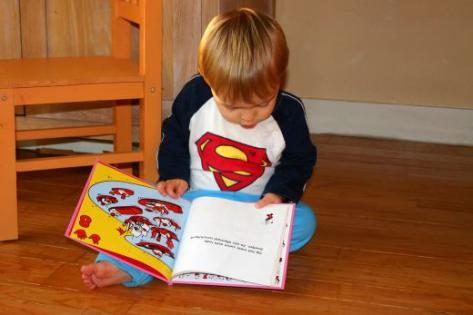Learning words and language is innate, which is why one of the best ways to learn a second or even third language is to do so as a child.
The important thing to realise is that every child will learn at a different rate, not only from their peers but compared with their siblings. I see this all the time with children even as they get older - in the classroom, on the playground and even at home amongst my own.
Some children also learn in spurts. One day they're silent; the next day they know a few more words; and then they acquire more and more. Their first words - other than a name for the parents - are usually about objects they use in every day life, eg. 'ball', 'book'.
But even if your toddler is slower to communicate, that doesn’t mean you shouldn’t be teaching him or her new words because they will still absorb what you are teaching them. So here are five ways to reinforce language and word learning in your youngster.
1. Repetition: This is one of the most basic learning techniques! Children need multiple exposures to a sound or word to fully develop the concept. Start with repeating syllables and soon, those syllables will expand into words and then phrases. Younger children (particularly 4 to 18 months) benefit from repetition as learning the most.
2. Gestures: Gestures can be used as a bridge to verbal communication, and pave the way to learning speech. When your child is able to use gestures or basic signs to convey a message, or request, speaking typically follows more rapidly. Parents can use gestures such as pointing, waving, or signs to reinforce some basic words such as ‘yes’ or ‘no’.
3. Expanding Sentences: As your toddler begins to use meaningful sounds and words to comment or request, expanding on their single words is a great way to teach grammar and new vocabulary. Using short phrases (such as ‘eat biscuit’, ‘drink milk’) can help your child distinguish basic grammar for language learning.
4. Pictures: Some of us are visual learners, and the same is true for kids! You can use pictures of family members or picture books to reinforce names and vocabulary. Pointing and naming pictures can teach children that words have meaning. Pictures can help a child understand a different part of the world and teach them novel words and concepts that they might not be exposed to otherwise. Pair repetition and sentence expansion with pictures for best results!
5. Exaggeration: exaggeration works when learning new words, because we have an emotional connection to pay attention to exaggerated events. Exaggerating facial expression (eg. happy, sad, surprised, tired) and using exaggerated adjectives (eg. fast/slow, big/little) in play can help a child distinguish basic concepts for better word learning.








 Agree (0)
Agree (0) Disagree (
Disagree (









__small.png)










